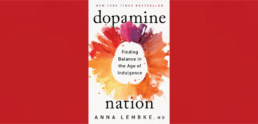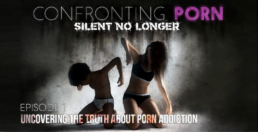No. 16 Summer 2022
Hello everyone. I hope you are enjoying the fine summer weather and freedom from Covid restrictions. In this edition we update you on some key developments on the internet. There are excellent resources for understanding and treating problematic pornography use/compulsive sexual behaviour disorder. We also highlight some great new research (open access where possible) in this field. There is also a surprise announcement. Enjoy!
Mary Sharpe, CEO

No Government Protection from Porn for Children till end 2023 or early 2024

The UK Government continues to drag its feet on age verification legislation. We need new laws to restrict children’s easy access to online pornography.
On 31st May 2022, The Reward Foundation ran a briefing on the developments in age verification legislation around the world. We cooperated with world class expert on children’s online safety, John Carr OBE. John is the Secretary to the Coalition on Children’s Charities in the UK. It included a talk on an important nationwide survey of young people and their exposure to pornography in Denmark. We welcomed 51 professionals from 14 countries to the event itself. See our blog for more details.
Unfortunately, the Online Safety Bill is not likely to be implemented until the end of 2023 or early 2024. Without effective legislation to limit children’s access to hardcore internet pornography, educational tools are all the more necessary. See our free lesson plans and parents’ guide.
Also, FYI, John Carr produces a first-rate blog called Desiderata. It keeps everyone aware of the developments in the UK, across Europe, and US on this important area. Another excellent blog on the developments in the UK Parliament on this Online Safety Bill is by Carnegie UK. They do a useful analysis and send out updates on a regular basis in their newsletter. You can sign up here for it here.
Your Brain on Porn book reaches sales landmark
Gary Wilson’s best-selling book, Your Brain on Porn – Internet Pornography and the Emerging Science of Addiction has now sold over 100,000 copies in English. The book grew out of the extremely popular TEDx talk The Great Porn Experiment that has now garnered over 15 million views worldwide.
The book comes as a paperback, audiobook or on Kindle. It is the best basic guide to internet pornography and remains clear and positive in its content. It’s a ‘must read’ if you are new to this area.
So far, Your Brain on Porn has been translated into Dutch, Arabic, Hungarian, German, Russian and Japanese. There are more translations on the way. We are working on versions in Spanish, Brazilian Portuguese, Hindi and Turkish. Access the different translations here.
New documentary arriving soon
In July 2018 Mary Sharpe and Darryl Mead from The Reward Foundation travelled to Washington DC. They attended the End Sexual Exploitation Global Summit. Louise Weber, an independent film-maker from Canada, interviewed us.
Our contributions are now incorporated in a 10-part docuseries Confronting Porn, Silent No Longer. Louise brings a vast range of voices to the table. There is a focus on the young men who have had to deal with the consequences of easy-to-access internet porn. This came at an age when their brains were designed to be fascinated by every aspect of sex.
Confronting Porn will launch over 10 days from 11 July 2022.
Dopamine Nation: Finding Balance in the Age of Indulgence: Great new book

Stanford professor Dr. Anna Lembke starts off her book discussing porn addiction. In this short YouTube video excerpt Dr. Lembke shares how in her clinical practice she has noticed a growing group of younger and younger men becoming addicted to porn since 2005.
Hot Money: Porn, power and profit: new podcast from the Financial Times
Hot Money: Porn, power and profit: new podcast from the Financial Times

When Financial Times reporter Patricia Nilsson started digging into the porn industry, she made a shocking discovery. Nobody knew who controlled the biggest porn company in the world. This eight-part investigative podcast, published weekly, reveals the secret history of the adult business and the billionaires and financial institutions who shape it.
New screening tool to assess internet disorders
New screening tool to assess internet disorders

Published in April 2022, Assessment of Criteria for Specific Internet-use Disorders (ACSID-11): Introduction of a new screening instrument capturing ICD-11 criteria for gaming disorder and other potential Internet-use disorders is an important new paper.
Given the similar way different addictive Internet behaviours affect the brain, researchers have developed a tool that works across several activities. The ACSID‑11 comprises 11 items that capture the ICD-11 [eleventh revision of the World Health Organisation’s International Classification of Diseases] criteria for disorders due to addictive behaviors. The three main criteria, impaired control (IC), increased priority given to the online activity (IP), and continuation/escalation (CE) of Internet use despite negative consequences, are represented by three items each. Two additional items were created to assess functional impairment in daily life (FI) and marked distress (MD) due to the online activity.
The researchers found that these criteria may also be applied to other potential specific Internet-use disorders, which may be classified in ICD-11 as other disorders due to addictive behaviors, such as online buying-shopping disorder, online pornography-use disorder, social-networks-use disorder, and online gambling disorder. [emphasis added]
Recent fMRI brain scan study supports the porn addiction model
Recent fMRI brain scan study supports the porn addiction model

The paper Neural and behavioral correlates of sexual stimuli anticipation point to addiction-like mechanisms in compulsive sexual behavior disorder came out on May 31st.
CSBD symptoms are estimated to be found in 3–10% of the general population. This Swedish study compared patients without CSBD [represented as HC, healthy controls, in the image above] who had 2.2 porn sessions per week and 0.7 hours’ use per week, to patients with CSBD who they found had had 13 porn sessions per week and 9.2 hours’ use per week. The latter also began their exposure to pornography a year younger.
Background and aims (From the abstract)
Compulsive sexual behavior disorder (CSBD) is characterized by persistent patterns of failure to control sexual impulses resulting in repetitive sexual behavior, pursued despite adverse consequences. Despite previous indications of addiction-like mechanisms and the recent impulse-control disorder classification in the International Classification of Diseases (ICD-11), the neurobiological processes underlying CSBD are unknown…
Conclusions
Our results … suggest that CSBD is associated with altered behavioral correlates of anticipation, which were associated with ventral striatum activity during anticipation of erotic stimuli…in line with our hypothesis that excessive incentive salience and related neural processes of reward anticipation play a role in CSBD…This supports the idea that addiction-like mechanisms play a role in CSBD. [emphasis added]
Pornography addiction and its impacts on intimate female partner wellbeing—a systematic narrative synthesis
Pornography addiction and its impacts on intimate female partner wellbeing—a systematic narrative synthesis

Released in January, Pornography addiction and its impacts on intimate female partner wellbeing—a systematic narrative synthesis is one of a growing number of studies focusing on the indirect ways that pornography use impacts women partners.
(From the paper) Numerous studies on the use of pornography in committed relationships have concluded that it is overwhelmingly linked to negative consequences. Feeling sad, furious, abandoned, ashamed, betrayed, powerless, hopeless, bitter, traumatized, along with diminished self-esteem and a sense of bewilderment with partners are all highlighted in the literature as some of the manifold negative emotions and outcomes. The most common reason given by viewers of pornography is to enhance sexual arousal and increase relational sexual satisfaction. However, according to Kraus et al., only 20% of men use pornography within a romantic relationship compared to 90% using it alone.
Results and discussion
This narrative review concludes that compulsive pornography consumption is commonly identified in the literature as a stimulus for risky and uncontrolled sexual behaviors, which have the potential to spawn addictive behaviors, relationship challenges and cascading adverse societal repercussions.
Effects of pornography on adolescents in six European countries - recent study

(From the abstract) A cross-sectional school-based survey of 10,930 adolescents (5211 males/5719 females), aged 14–17 years old (mean age 15.8 _ 0.7) was carried out in six European countries (Greece, Spain, Poland, Romania, the Netherlands, and Iceland). Anonymous self-completed questionnaires covered exposure to pornography, internet use and dysfunctional internet behavior, and psychopathological syndromes (measured by Achenbach’s Youth Self-Report).
The prevalence of any online exposure to pornography was 59% overall and 24% for exposure at least once a week. The likelihood of online exposure to pornography was greater in male adolescents, heavier internet users, and those who displayed dysfunctional internet behavior… Online exposure to pornography was shown to be associated with externalizing problem scale scores, especially rule-breaking and aggressive behavior, but also associated with higher scores in competences, namely activities and social competence.
Treatment for Compulsive Sexual Behaviour Disorder (and alcohol use disorder)

We end our new research roundup with an important study helping expand treatment options.
This research shows that Compulsive sexual behavior disorder (CSBD) produces similar brain changes to those found in people with exposure to substance abuse disorders, and many people have multiple addictions. This paper has a case report of a 53-year-old man with a history of extensive alcohol use and CSBD. It also reviews the main treatments available that can help in all addictions.
(From the abstract) …Until now there are no FDA-approved medications for sexual addiction or compulsive sexual behaviors. However, the therapeutic benefits of selective serotonin reuptake inhibitors (SSRIs) and naltrexone are known.
…The literature review has shown that patients’ symptoms were improved in different doses without side effects. Based on this and our experience, it can be said that naltrexone is effective in the reduction and remission of the symptoms of CSB or sexual addiction.
Surprise!
We are going to launch a new look website over the summer. The current website has been around for 7 years. It was time to catch up with a more mobile-friendly style that users tend to expect these days. We will still bring you the same quality content, just in an easier format to digest. Look out for it at rewardfoundation.org. Feedback and comments are always welcome. Contact: [email protected].
See you on the beach!




